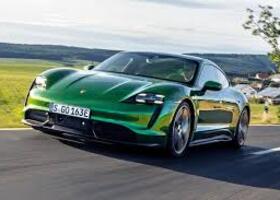Worldwide are several types of electric vehicles we have heard about. This article is a classification and a summary working description of electric vehicles so that they become easy to identify.
Types of Electric Vehicles
The classification based on the drive-train and fuel type used. This mode of classification divides the vehicles in:
Internal Combustion Engine (ICE)
Alternative Fuel Engine
Electric Vehicles(EV)
The conventional ICE vehicles include gasoline and Diesel vehicles. The alternative fuel vehicles are the vehicles using other fuels than gas or Diesel like autogas, natural gas, biodiesel, biofuel, or hydrogen. The ICE vehicles in both forms use mechanical drive-train.
The battery-electric(all-electric) vehicles use energy source for propulsion. All-electric vehicles use electric drive train.
For propulsion electric vehicles can be hybridized. Generally, are Hybrid Electric Vehicles(HEV), Plug-in Hybrid Electric Vehicles(PHEV), Battery Electric Vehicles(BEV), Fuel Cell Electric Vehicles(FCEV), and probably in the future solar electric vehicles.
The hybrid electric vehicle has a source of energy gasoline or Diesel and for the propulsion can use either an electric motor or an internal combustion engine.
The plug-in hybrid is similar to the hybrid electric vehicle only that it can use the charging port to charging its battery.
In contrast, the pure electric vehicle has not an engine motor and is powered only by electricity without fossil fuel.
Finally, in the case of fuel cell and solar electric vehicles, the source of energy is from hydrogen using fuel cell panels. Here the propulsion is done using an electric motor.
Gasoline-Diesel Vehicle(ICE)
A gasoline car usually uses a spare plug engine, and the compression engine systems are using in Diesel vehicles. The Internal
Combustion Engine(ICE) is a heat engine in which the combustion of a fuel occurs with an oxidant. The engine through a complex mechanical transmission transforms the chemical energy into useful power to the wheels.
Hybrid Electric Vehicle(HVE)
Similar to a gasoline vehicle, hybrid electric vehicles are powered by an ICE as well. However, in addition, an electric motor helps to drive the vehicle by using the energy stored in the batteries. The battery is recharging by taking the energy from the engine by using the electric motor that an electric generator. To operate the motor that a generator of energy, is used as a clever power electronic drive motor. The benefit of this extra power is a motor smaller and a fuel economy. This is a parallel hybrid design where both the engine and electric motor can power the wheels at the same time.
A series-hybrid vehicle works differently. The internal combustion engine is powering a generator. This generator provides electrical power for the traction motors and to charge the battery. This method was used for locomotives for years. The traction motor is the only power grid unit with a connection directly to the wheels. The ICE motor at this system is operating at its most efficient point to generate the necessary current for driving the traction motor or charging the battery.
The third type of hybrid is the series-parallel. It operates either in series or parallel mode by using a parallel-split. It has, also, a generator to charge the battery like a series hybrid. Also, it has an engine and motor working together to power the wheels as seen in the parallel hybrid. If these types of electric vehicles hybrid are more flexible in terms of driving modes, are more expensive and more complex. Toyota Prius is a model of series-parallel hybrid.

Plug-in Hybrid Electric Vehicle(PHEV)
Plug-in hybrid electric vehicles are similar to hybrid electric, they have an engine and electric motor for propulsion. The difference is that PHEVs are longer and can be charged by on-board charger. This is besides the fact that the battery can be charged using the ICE when it is driving. This permits the PHEV to drive more time. This means PHEV can drive electric in the city and switch to fossil fuel on the highway, removing the range-anxiety (see another article). Example Chevrolet Volt- Plug-in Hybrid series-parallel architecture.

Battery Electric Vehicle(BEV)
HEV and PHEV continue to use fossil fuel combustions and of course, have tailpipe emissions. This is their main disadvantage. All-electric vehicle(Battery Vehicle) has only an electric motor and no internal combustion engine- see: electric car components
The vehicle uses a high-voltage traction battery pack to power the motor and, also, the battery is charging from a power outlet when it not work.

Fuel Cell Vehicle(FCEV)
Fuel cell removes the large battery from a battery electric vehicle with a fuel cell stack to generate electricity from hydrogen. It is still necessary for a small battery to power the electric motor using the motor drive.

A fuel cell vehicle has the advantage of short refueling time and extended drive range compared with electric vehicles. Example: Hyundai Tucson, Toyota Mirai.
